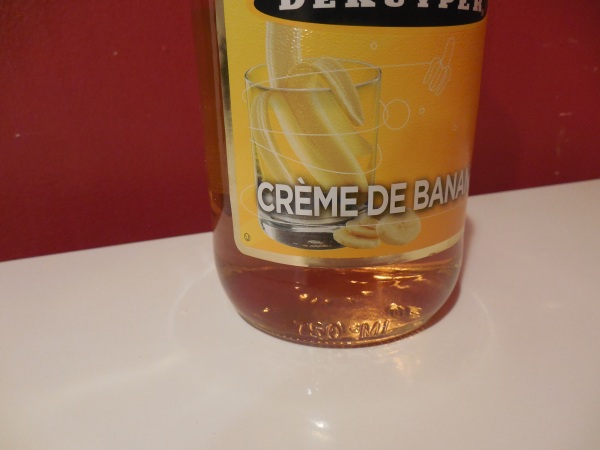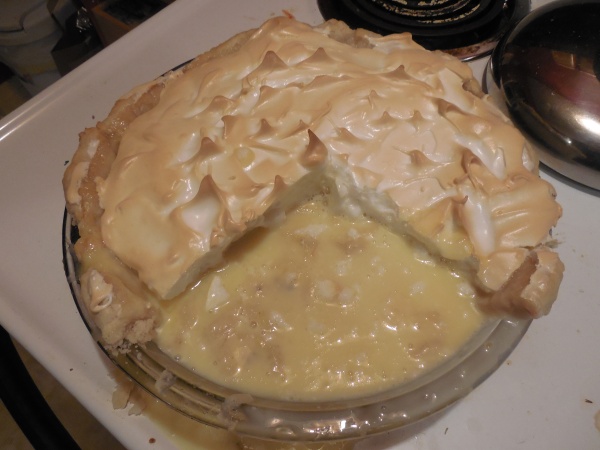I had some leftover bananas, and instead of making banana bread, I decided to try banana cream pie. Here’s the result.
The evening started with me explaining to my roommate why I prefer the thickening powers of corn starch over flour. When you mix corn starch with water, and then you heat it, it causes the starch granules to burst open. As they burst open, they start forming connections with other burst granules and form a network to trap the water. Visually, you start by stirring a pot of water and cornstarch that looks like milk. When it hits the critical temperature, it suddenly starts looking like translucent paste. Starch is magic that way.
My bananas were over a week old. Riper bananas are known for being sweeter and softer than their green counterparts. The reason is because green bananas are full of starch, which gets broken down into base sugars during the ripening process. The process uses an enzyme called amylase.
I made my custard base. The starch made it nice and thick, and I wondered how long it would have taken for a similar paste to thicken from flour. I added banana liqueur instead of vanilla. I had to buy the banana liqueur for another recipe, so now I have this huge bottle that I need to use up.

The pie was constructed: one pre-baked crust filled with 3 bananas and covered with the custard, topped with meringue. The whole thing sat beautifully in the pie pan, and it looked great.
I took it out and let it cool. As it cooled, I noticed the meringue pulling away from the edges of the pie a little bit. I assumed that due to something about meringue that I didn’t understand (this is my second time making meringue). Finally, I cut my first slice.

Okay, this is after 2 slices, but that’s what you have to do when there aren’t a lot of people to share your food.
What I have is banana soup topped with meringue. What happened to my thick, delicious custard?
The amylase in the bananas has pretty much finished converting the banana starch into sugar. In an environment surrounded by starch, the amylase goes to work and starts breaking it down. The increased temperature of the oven may have helped to increase the activation energy for the enzymes, which means that it will take less effort and time to break down the starch. Soon, the long starch chains are no longer there to trap water, and the mix turns to liquid.
How can this be prevented in the future? One trick might be trying fresher bananas. If the amylase is more focused on the banana starch, it may prevent it from attacking the custard. Another idea would be to use flour instead of starch. Flour has other components that may help thicken the custard, even if the starch breaks down. If there were some way to deactivate the amylase in the bananas, that could work. I imagine that trying to blanch or otherwise precook the bananas would result in an undesirable soggy mess.
In conclusion, I think I will try a chocolate cream pie next time.

